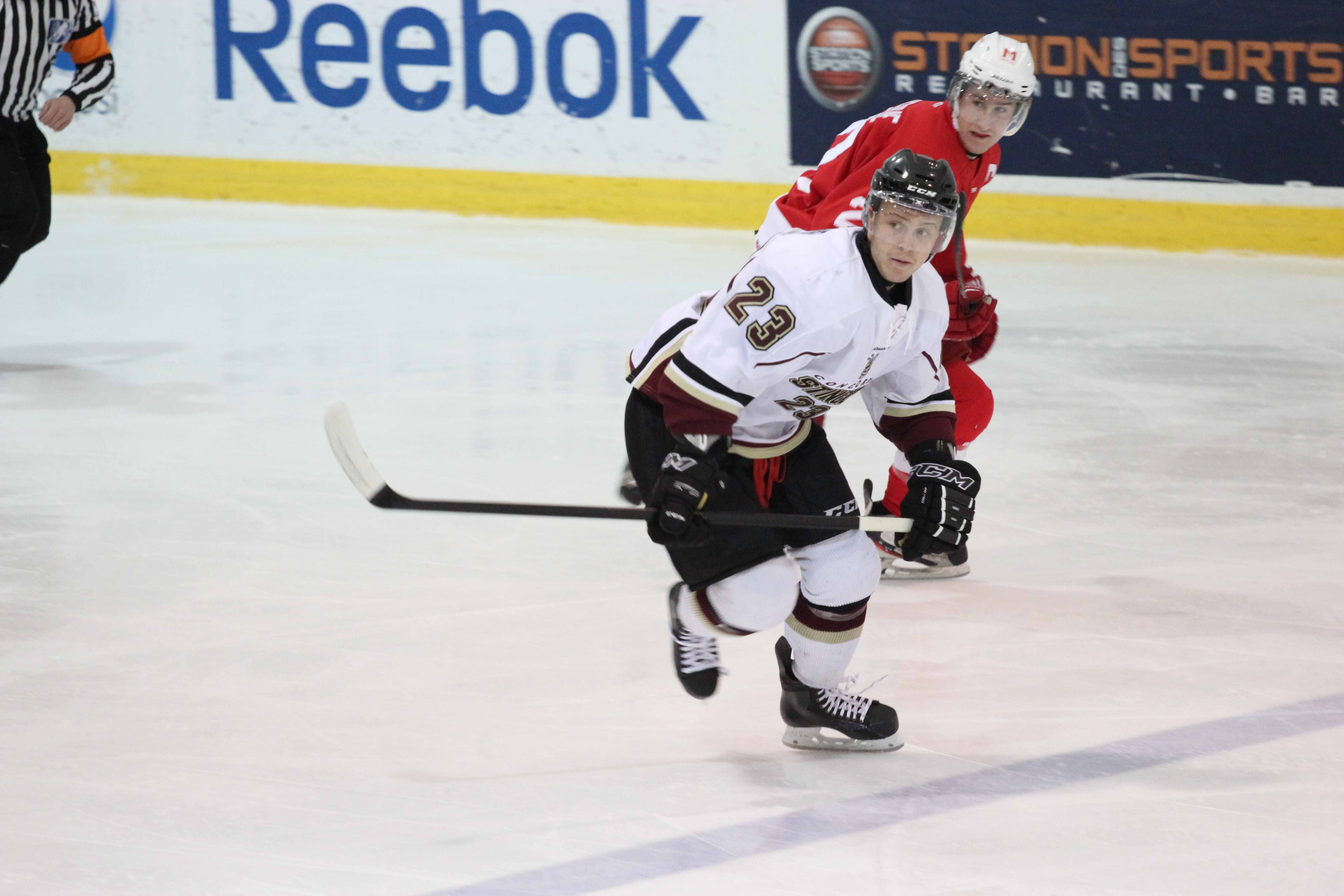The Concordian looks at what the men and women’s teams need to do to improve next season
Men’s hockey team
The men’s hockey season was filled with obstacles to overcome. The team was hit very hard with injuries, the most notable being their first-line winger Jessyco Bernard and alternate captain Youssef Kabbaj. Although teams never like to use injuries as an excuse, it made success much harder to come by for the Stingers. The defensive core was severely victimized by injuries, with only one defenceman playing in all 28 games.
The Stingers had a very young team this year, with 13 first-year players on the roster. After making it to the post-season for the first time in three years, the team’s lack of experience may help explain an early exit from the playoffs against the heavily favoured McGill Redmen. A team with so many new players will also have a difficult time creating chemistry, something that will develop as the players continue to play together in the coming years.
The team came close to defeating the Redmen in the first game of their playoff series, but a few breakdowns in a matter of minutes cost them dearly. The Stingers kept the second game close until the midway point of the game, when the Redmen’s offensive skill took over the game and buried the Stingers. The difference in both skill and experience was clear between the two teams.
The team also said farewell to their beloved captain George Lovatsis, who reached his maximum five-year eligibility. The veteran winger was an undeniable leader of the team, and his departure will be noticed. With such a young team, leadership is a valued commodity. Lovatsis brought an incredible amount of leadership with him wherever he went.
Although the season was a challenging one, there were still many positives that can be taken out of it. Star forward Olivier Hinse was a consistent bright spot throughout the season, finishing third in the Canadian Interuniversity Sports league (CIS) with 18 goals. Hinse also led the team with 34 points, while also bringing leadership and energy each and every game. Starting goalie Antonio Mastropietro was a workhorse for the team, playing in 20 of the team’s 28 games. On most nights, Mastropietro gave the Stingers a chance to win.
Moving forward, the team will only get better as the younger players gain experience. Although losing Lovatsis and his leadership is a difficult pill to swallow, the team will continue to thrive under the leadership of Hinse, Kabbaj, Bernard and Kyle Armstrong. The Stingers have a very hopeful future ahead of them, and the Stingers will become more experienced and competitive as a group.
Women’s hockey team
The women’s hockey team finished with their best record in four years, but it was still a difficult season. Finishing the season with a 5-15 record, the Stingers struggled to produce offensively. Although the team played better than their record gives them credit for — seven of their losses were by one-goal margins — a lack of execution and consistency hurt their chances to succeed in the postseason.
In their playoff series with the McGill Martlets, the Stingers lost by a score of 3-2 in a very close game one. Although the team played well in that game, they were thrashed in the second by a score of 10-2, ending their season in a disappointing fashion. Inconsistencies cost the team in the end.
The 10-2 loss was also the last game for four of the veteran Stingers, most notably their captain Erin Lally. Although this leaves the team with a huge loss of both experience and leadership, it is an opportunity for younger Stingers to step up and become leaders. The team can definitely build off a frustrating season. They know their final record is not a fair reflection of how they played, and they will be looking to better that next year.
